Talking About Women’s History: Ten (!) Questions and an Answer with Mary Cronk Farrell
Mary Cronk Farrell got carried away and answered LOTS of the questions I gave her. I wasn’t surprised. Enthusiasm and energy are two of the qualities I associate with her and her work.
Mary is the author of books for young people and a former journalist with a passion for stories of little-known women who faced adversity and prevailed through fortitude, hard work and courage. Her books earned starred reviews and are named on lists for the Notable Social Studies Books for Young People, Bank Street College Best Children’s Books, NY Public Library Best Books for Teens and the Amelia Bloomer Project. Her work has been nominated for the Washington State Book Award, the California Reading Association Award for Excellence in Nonfiction, and the Western Writer’s Spur award for best fiction for young people.
Take it away, Mary:
You write about forgotten/historical women for younger readers. Why do you think it is important to tell these stories today
Telling women’s stories is critical if we’re to stop the machine of history that has ignored, devalued and denied women’s contributions. Without these stories we don’t have a full, in-focus, right-side-up picture of the past. And without such an understanding of the past, we can’t take meaningful strides toward justice for women. Until women’s gifts and contributions are valued equally with men’s we will continue down many of the destructive paths we’ve taken before.
Stories of individual women are important because they give us different types of role models, and demonstrate different ways that women can approach obstacles in order to accomplish their goals. I have learned so much from the women I’ve written about: the power of leadership and grit from women prisoners-of-war, the strength of unity and collaboration from a labor organizer, the courage to step beyond your comfort zone from black women who dared join the segregated US army in WWII, and self-confidence and persistence from a young woman who followed U.S. Marines into some of the bloodiest battles of the Vietnam War.
Learning the details of historical women’s lives empowers us, provides doors and windows to better understand ourselves and others. These women give us hope to engage with the circumstances of our own lives and strengthen our faith in the human spirit and our own capabilities. Lastly, telling women’s stories honors and gives credit where credit has long been overdue.
You write both historical fiction and historical non-fiction. Is your research process different for fiction than for non-fiction?
For both historical fiction and nonfiction, my research is very much the same in terms of process. But when writing a true story I am much more meticulous about sources, details and actual quotes. What I love about research is the same for both, and that is the discovery of details that help bring history to life, interesting information that help me paint a picture.
For example, I discovered quite revealing details about the facilities, where in 1941 after the fall of Corregidor in the Philippines, the Japanese imprisoned US army nurses For some 300 prisoners there were three showers, five sinks and five toilet stalls from which the doors had been removed. On the wall, a sign in huge letters said. IF YOU WANT PRIVACY, CLOSE YOUR EYES.” These few, precise details help us imagine a great deal about the women’s day to day lives in captivity.
When did you first become interested in women’s history? What sparked that interest?
I think it was the courage and fortitude of women that sparked my interest at a young age. I remember from when I was very young, a story my mother read to me about Saint Frances of Cabrini, who I’m named after. As a child Frances played with her brother by a stream where they made little leaf boats and sent them off downstream to the sea, if I remember correctly after all these years. (And possibly the story itself was not exactly true.)
Frances was determined that one day she would bravely sail across the sea and spend her life helping others. Which she did. She founded a religious order, the Missionary Sisters of the Sacred Heart, and in 1889, she sailed from Italy where she was born to the United States. She spent her life building schools, hospitals and orphanages. I never imagined joining a religious order, but at some point I realized the opportunity they presented to women. Within the bounds of their orders, many religious women throughout the ages had the freedom to pursue full-time careers, every bit as accomplished as many men. Now I’ve totally gotten off the topic. But I’ve always been drawn to stories of women who are fearless, go after what they want and don’t give up.
How would you describe what you write?
I write about little-known women in American History whose incredible courage will amaze you. Every one of my books has started with a discovery, the unexpected find of a historical person or persons that I think everyone should know about. Often, I’m shocked it isn’t being taught in school. I get so excited about how and why they did what they did that shouting from the rooftops does not seem like a silly, threadbare cliché.
What work of women’s history have you read lately that you loved? (Or for that matter, what work of women’s history have you loved in any format?)
I recently read about Gerda Pohorylle, a young German Jewish woman who escaped Germany in 1933 when Hitler became chancellor. In Paris, she met another young Jew teaching himself photography. They collaborated and she suggested they change their Jewish surnames to increase opportunities with international newspapers. She became Gerda Taro and her friend Robert Capa, who would later become the world’s most famous war photographer. Covering the Spanish Civil War, Gerda became one of the first women working in the field of photojournalism, and unfortunately, she was the first to die on the frontlines of war.
If you could pick one woman from history to put in every high school history textbook, who would it be?
Too difficult to choose, but I’ll say Gerda Taro because I only recently learned of her. She was only 26 years old when she was killed, so I think young people would relate to her. In this time of fake news, I believe it is so important for us to realize that for combat journalists, the truth is worth dying for.
What’s your next book about and when will we see it?
My next book is Close-up on War: The Story of Pioneering Photojournalist Catherine Leroy in Vietnam. The cover was just released in February, which is very exciting, but it will not be published until 2/2/22.
As the title says, it’s the story of Catherine Leroy, a combat photographer who started her career in Vietnam.
When Catherine flew to Vietnam in 1966, the United States was rapidly escalating its war against communism there. Though equal rights and equal pay for women were still considered radical in America, she dared to take on the heavily male-dominated world of war photography.
Bold, determined, and cool under fire, Catherine accompanied marines into the jungle, crawled through rice paddies, and parachuted into combat despite being told she didn’t belong in a “man’s world.”
Scores of photojournalists from around the world risked their lives reporting on the long, costly, and divisive war. For the bloodiest years, 1966-1969, Catherine remained the only woman photographer.
Neither capture by the enemy nor shrapnel wounds kept Catherine from getting her pictures. Her raw photos showed the brotherhood and compassion of soldiers, the anguish of civilians, and the humanity of the enemy. Published in America’s leading newspapers and magazines, Catherine’s images forced Americans to confront the human cost of war.
Based on Catherine’s personal letters from Vietnam, and including her most powerful photos, this biography is a gripping look at the Vietnam War through the eyes of an extraordinary woman whose legacy of compassion endures today.
What do you find most challenging or most exciting about researching historical women?
I love researching historical women and find it exciting to discover facts I didn’t know before. What I find challenging is all the detail work that goes into writing a nonfiction book, for instance, my new book included 23 manuscript pages of endnotes. I had many different kinds of sources and had to continually look up in the Chicago Manuel of Style to make sure I had the commas in the right place, italics where they needed to be, and so on. Then there was a different style to adhere to writing up all these same sources for the bibliography. I honestly just about lose my mind doing that kind of work.
Do you think Women’s History Month is important and why?
Mostly, I think it’s fun and interesting. I love learning about women I haven’t heard of and the impact they made in history.
What was the most surprising thing you’ve found doing historical research for your work?
To this day, I think the most surprising thing was discovering some eighty American military nurses had been captured POW by the Japanese in the early days of WWII. They remained in prison camps until the last months of the war and barely survived. I feel honored to have had the chance to write their story, and some of the most memorable and meaningful moments I’ve had as an author was talking with sons and daughters of those women.
My question for Pamela is: Why was it important for you to write about women warriors? This seems a fascinating topic for study, but what drew you personally to commit so much of yourself to writing this book?
I’ve been fascinated by the concept of women warriors ever since I was a nerdy kid who read every biography of famous women I could get my hands on and who regularly blew her allowance on comic books with female super heroes. Like a lot of young girls, I was hungry for historical role models that told me it was okay to be smart, mouthy, opinionated, or different. Looking at women warriors as role models, whether they are historical or fictional, takes that one step further. They’re not just smart, they’re strong. They’re not just opinionated, they’re brave. (I think one reason so many young girls are fascinated by Joan of Arc is that she was a teenage girl who made powerful people listen to her. That’s heady stuff if you feel like you can’t make yourself heard.)
But the real trigger for me came in 1988, when Antonia Fraser published Warrior Queens. Fraser’s book not only introduced me to women I’d never heard of before, but also to a new idea: that women “fought, literally fought, as a normal part of the army in far more epochs and far more civilizations than is generally appreciated.” Once I was aware that women warriors had existed in many times and places, it seemed like I ran across references to them everywhere. I began collecting their stories with no particular purpose in mind. After a couple of decades, that file was pretty fat and I decided it was time to share.
* * *
Want to know more about Mary Cronk Farrell and her work?
Check out her website: www.MaryCronkFarrell.com
Read her latest blog post
Follow her on Instagram: marycronkfarrell
Follow her on Facebook: Author Mary Cronk Farrell
* * *
Come back tomorrow for all the questions and an answer with historian Allison Lange, talking about women’s suffrage, women’s history, and the power of images.
* * *
If you’re interested in the process of writing and thinking about history, you might enjoy my newsletter, which comes out roughly every two weeks. The content is totally different from History in the Margins. In recent months I’ve discussed forgotten female photojournalists, cliffhangers, the odd experience of reading history “in real time” in the form of old newspapers, and the question of “first-naming” the subject of a biography. If that sounds like your bottle of beer, you can subscribe here: http://eepurl.com/dIft-b (When you subscribe, you’ll get a link for a very cool downloadable timeline of the Roman emperors and the women who fought against them or supported them, which I created with the people behind The Exploress podcast.)





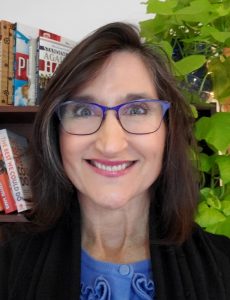
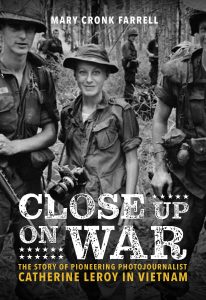
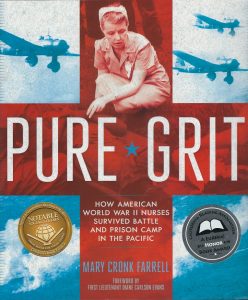
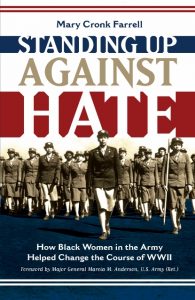
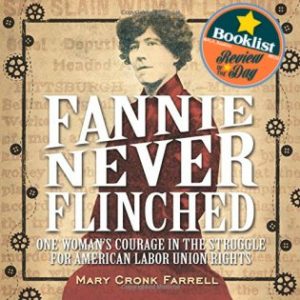
Thank you, Pamela, for featuring me and my books! Such an honor to be on your blog!
So glad you were willing to play!